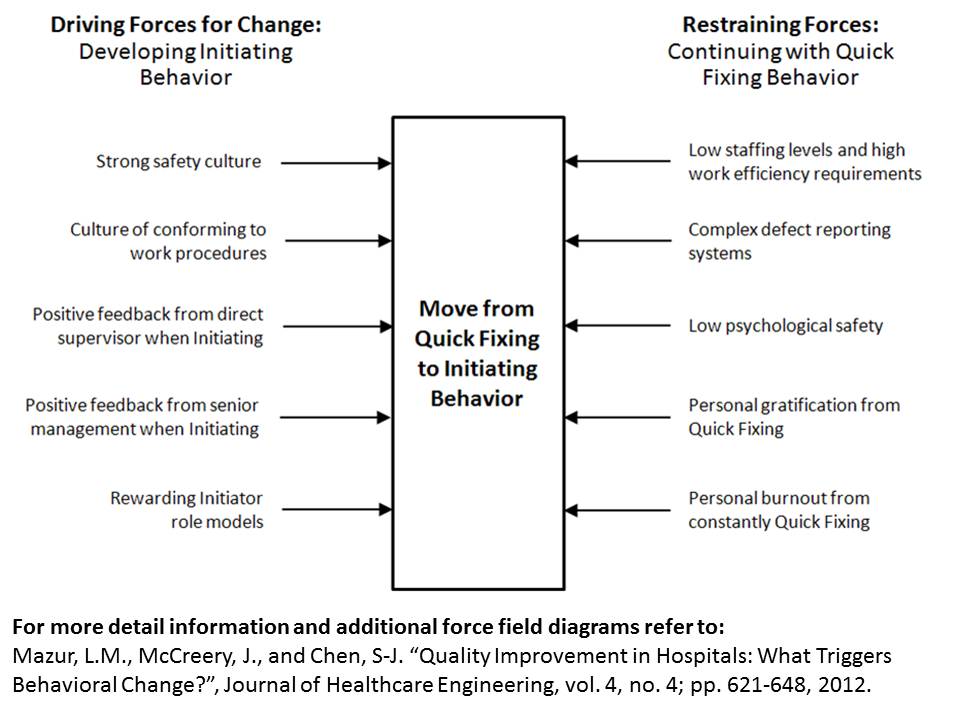Tools and Methods
Measuring individual learning and behavior:
We developed and validated a short survey instrument to measure Lean learning and behavior as it relates to double-loop learning developed based on the literature regarding the concepts of double-loop learning proposed by Argyris and Schon (1978) and Lean thinking (Womack et al., 1990).
| 1. I question actions in my area more than I did before learning about lean. |
| 2. I have taught others in my area about the use of Lean tools. |
| 3. I understand operations on our unit more than I did before learning about Lean. |
| 4. I am comfortable in suggesting the use of Lean in my area. |
| 5. People in my unit are committed to Lean change. |
| 6. When people in my area see an opportunity for the use of Lean, they recommend it to managers. |
| 7. By applying Lean, we have been able to make our area more efficient. |
| 8. In my area I can use Lean freely. |
| 9. People in my unit use Lean together to improve the care of our patients. |
| 10 By applying Lean, we have made our operations on our unit more effective. |
For more details please see Mazur, L.M., McCreery, J., Rothenberg, L. “Facilitating Lean Learning and Behaviors in Hospitals during the Early Stages of Lean Implementation,” Engineering Management Journal, vol. 24, no. 1; pp. 11-22, 2012. http://www.asem.org/asemweb-emj.html
Driving behavioral change:
Improving operational performance in hospitals is complicated, particularly if process improvement requires complex behavioral changes. Using single-loop and double-loop learning theory as a foundation, we empirically uncovered key improvement behaviors and the factors that may be associated with such behaviors in hospitals. First, we identified five key behaviors related to process improvement, namely Quick Fixing, Initiating, Conforming, Expediting, and Enhancing. Second, based on these observed behaviors, we proposed set of force field diagrams to structure and organize possible factors that are important to consider when attempting to change improvement behaviors. This begins to fill the gap in the knowledge about what factors drive effective improvement efforts in hospital settings. Example of the force field diagram is presented below.

